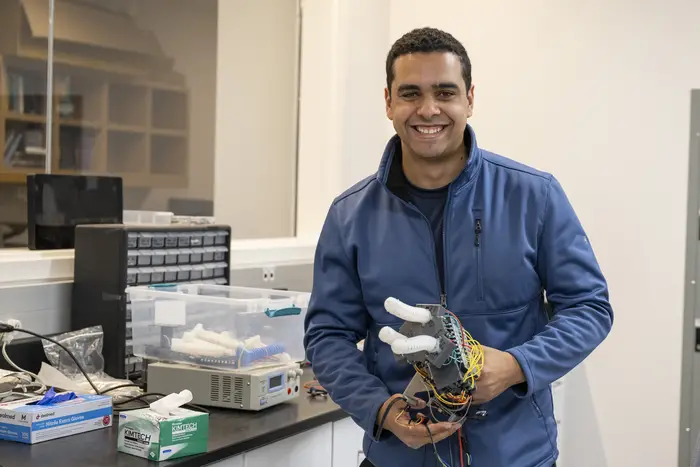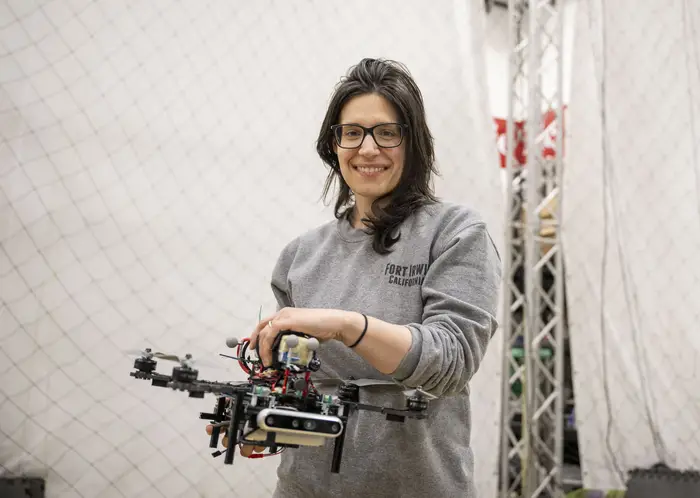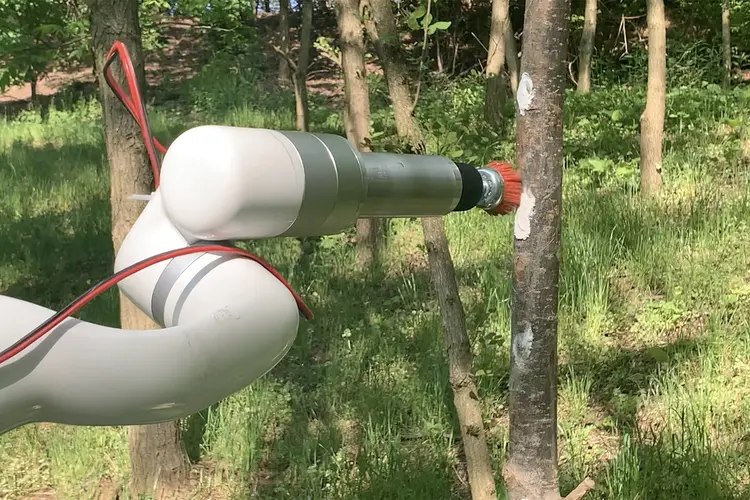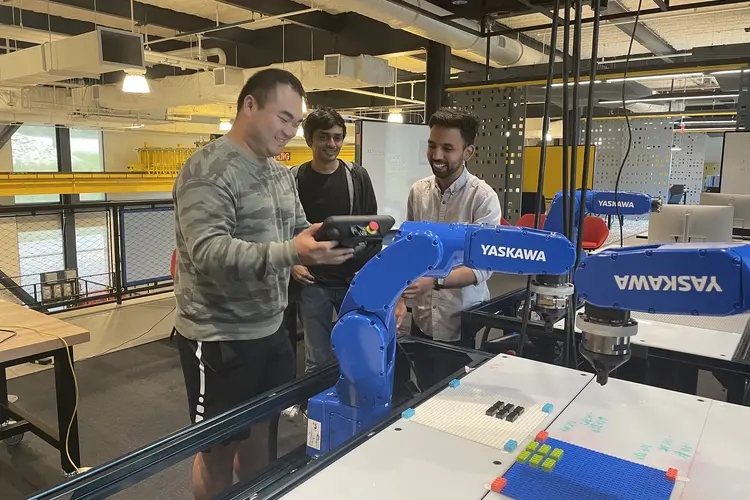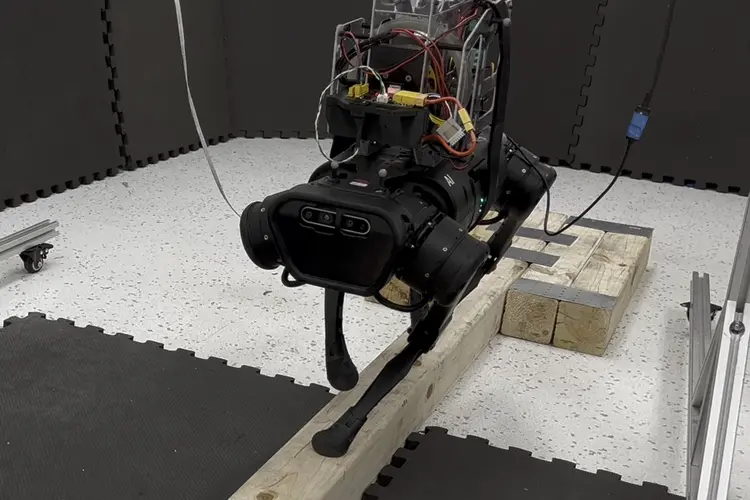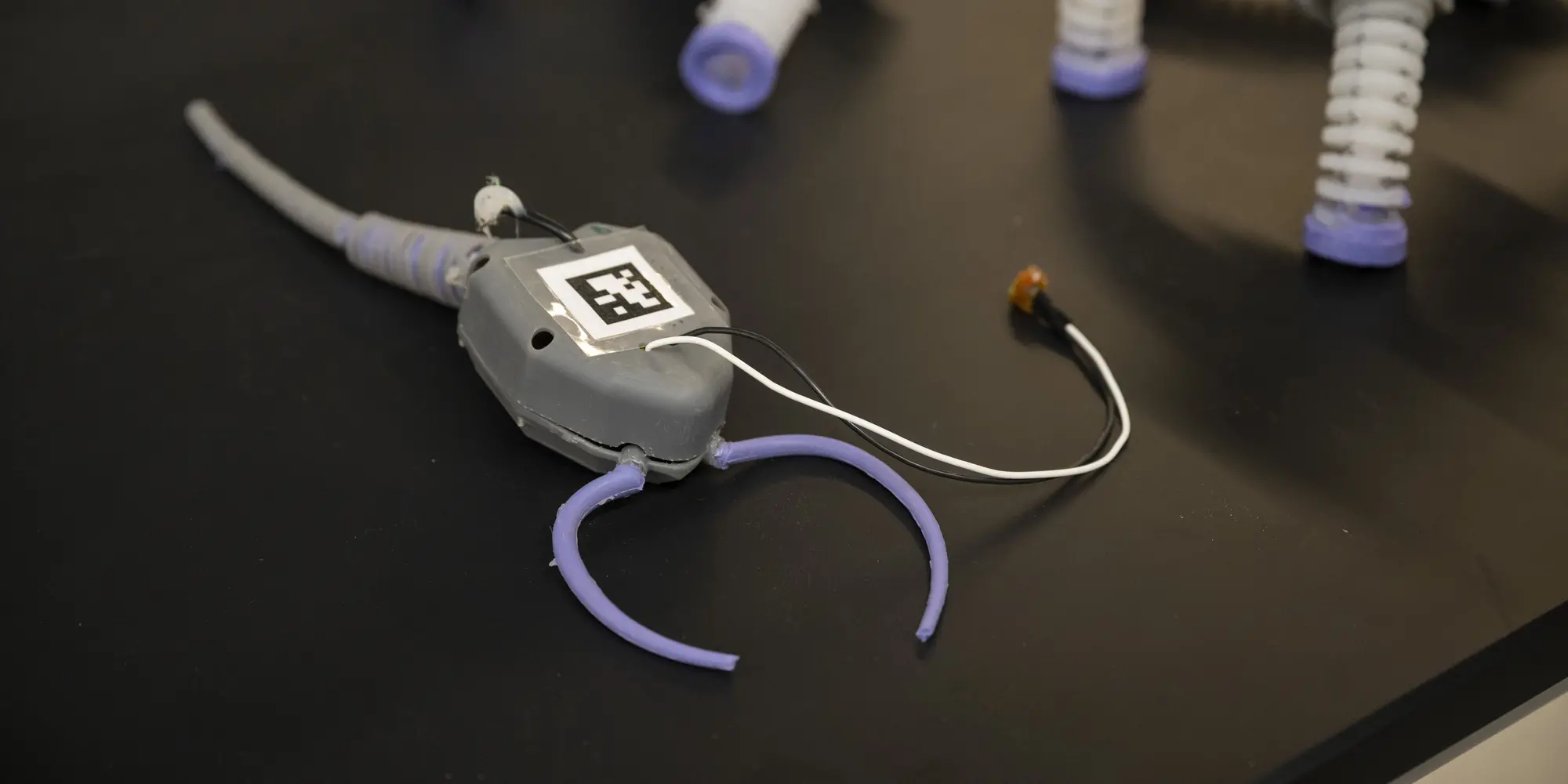
CMU Researchers, Robots Head To Nation’s Capital for Robotics Showcase
Media Inquiries
Carnegie Mellon University researchers from its Robotics Institute(opens in new window) (RI) and College of Engineering(opens in new window) are packing up fossil-inspired paleobionics(opens in new window), robotic hands and autonomous aerial vehicles(opens in new window) to demonstrate to members of Congress and their staff at “Robotics for a Better Tomorrow: Robotics Showcase and Demo Day,” in Washington, D.C. on April 30.
Over 30 researchers from federal agencies, industry and academia across 20 states will exhibit their work for lawmakers, sharing how robotics is evolving with artificial intelligence and how the field contributes to U.S. competitiveness, regional economic development and transforming the nation’s workforce.
Representing CMU will be Carmel Majidi(opens in new window), the Clarence H. Adamson Professor of Engineering and leader of the Soft Machines Lab(opens in new window); Ph.D. students Richard Desatnik and Nathan Zimmerer; and Wennie Tabib(opens in new window), RI systems scientist and director of the Resilient Intelligent Systems Lab(opens in new window).
Robotic Hands for Senators to Shake
Majidi, Desatnik and Zimmerer will be exhibiting three current projects. Rhombot, the soft robot modeled after a 450-million-year-old fossil, broadens researchers’ understanding of animal design and movement, and informs how scientists can use soft materials to construct flexible robot limbs and appendages.
A multilimbed “zombiebot” is also inspired by nature, specifically creatures like starfish that can remain functional after losing a limb.
“Each arm of this robot runs independently,” explained Desatnik. “It can reassemble and continue operating even if it loses a part.”
The third project the team will highlight is a teleoperated soft hand, which is remotely operated by a glove that allows the user to feel the movement. “We’re hoping to be able to shake hands with the senators,” said Desatnik.
Cave-Exploring Robots for Search and Rescue
Tabib will bring Omicron, a small aerial robot designed to autonomously navigate complex environments like caves or collapsed buildings.
Emergency responders don’t always have the expertise required to do search and rescue in caves, often relying on local caving groups to lend their knowledge and experience. Finding and assembling these local experts takes valuable time.
“If we have tiny robots that can go through the cave or buildings, into tight gaps and over rocks and rubble, to search for anyone who may be trapped, that could not only be safer, but also save a lot of time for a search and rescue team,” Tabib explained.
While the event will showcase the potential of new robotics applications, Majidi’s goal is to demonstrate the value of his students to the lawmakers.
“The output from universities like ours is not so much the inventions, it’s the students,” he said. “A lot of our ability to discover new ideas and train students depends on fellowships. Getting more opportunities for funding students, especially domestic students, to pursue Ph.D. degrees is really important.”
Tabib said legislators should consider the big picture when they meet the small robots.
“We’re doing work that has implications for a broad range of domains — not just for search and rescue, but for security or agriculture applications,” said Tabib. “We’re doing the fundamental research that is going to drive the next generation of robotics.”
